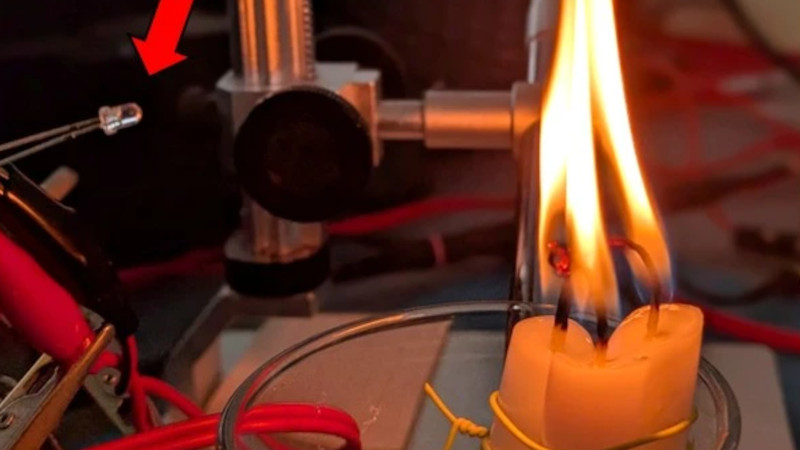As the timebase for a clock, almost anything with a periodic oscillation can be used. Traditionally, that meant a pendulum, but in our time, we’ve seen plenty of others. Perhaps none as unusual as [Tim]’s candle flicker clock, though.
Candles are known for their flickering, a property of the wick and the fuel supply that candle manufacturers have gone to great lengths to mitigate. If you bring several of them together, they will have a significant flicker, with a surprisingly consistent 9.9 Hz frequency. This is the timebase for the clock, with the capacitance of the flame being sensed by a wire connected to a CH32 microcontroller, and processed to produce the required timing.
We like this project, and consider it a shame that it’s not an entry in our One Hertz Challenge. Oddly, though, it’s not the first candle-based oscillator we’ve seen; they can even be turned into active electronic devices.
















This looks familiar…
https://hackaday.com/2025/08/17/2025-one-hertz-challenge-a-flaming-oscillator-and-a-new-take-on-the-candle-clock/
Huh, this article says it is an entry in the One Hertz Challenge :-)
https://hackaday.com/2025/08/17/2025-one-hertz-challenge-a-flaming-oscillator-and-a-new-take-on-the-candle-clock/
Repost?
Facepalm
Uh oh, I think I caused some confusing by also summarizing the project as a blog post.
The original project is here: https://hackaday.io/project/203763-deriving-1-hz-from-candle-flame-oscillations (And I hope its part of the 1Hz challenge :) ). And Aaron wrote a HaD post about it, so it is a bit of a dupe.
Repository: https://github.com/cpldcpu/CandleSense
Repost of https://hackaday.com/2025/08/17/2025-one-hertz-challenge-a-flaming-oscillator-and-a-new-take-on-the-candle-clock/
oh that’s neat but it wasn’t what i was expecting :)
i was thinking of a mechanism that assumes a relatively constant heat source and nonetheless oscillates. like a thermal version of the drinking bird. maybe a bimetalic strip with some mechanical hysteresis added
If 3 candles have stable oscillations, do 1-2 candle configuration have random frequency?
I’m surprised they don’t specifically engineer candles to flicker, since they’re mostly used for decorative and traditional purposes.
But then again, it seems like a really surprising number of people still use them regularly as emergency lighting.
The soot generated by the flickering is why people don’t like that.
I gonna make a Python script that buy BTC when the cycle of the candle is in a dip and sell in the peaks…who knows :)